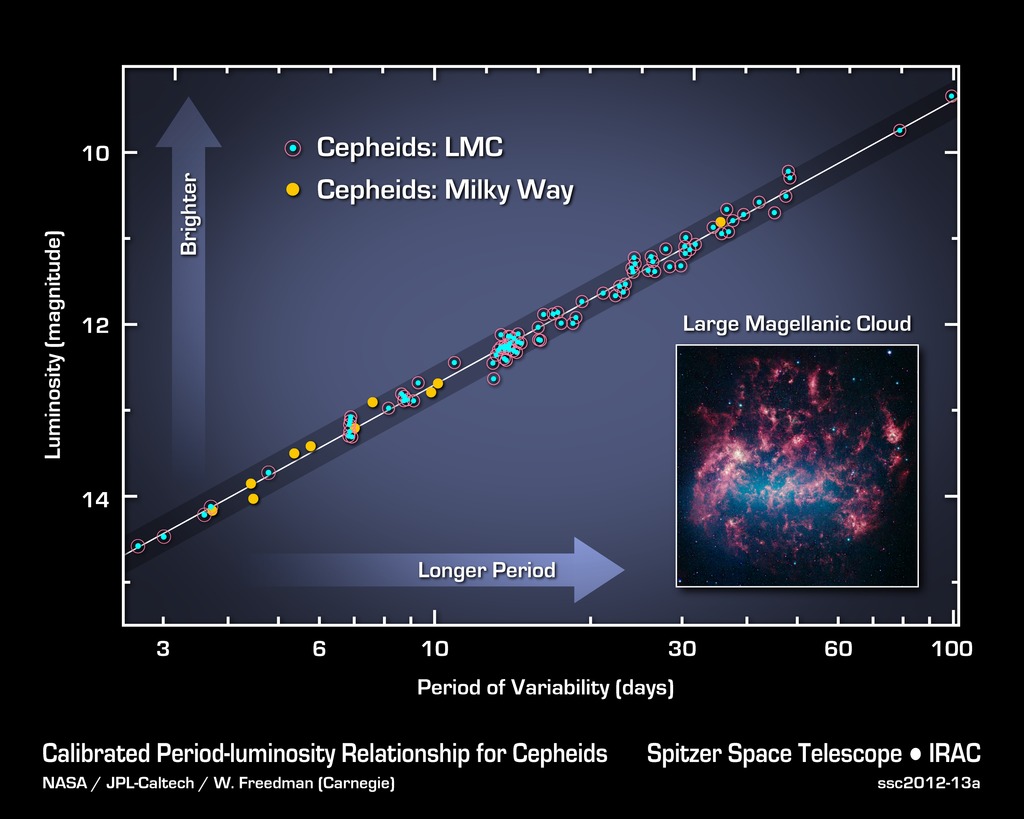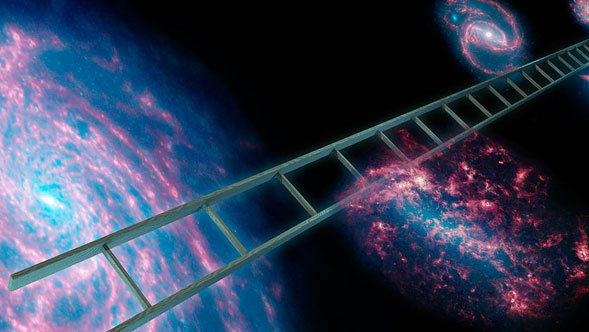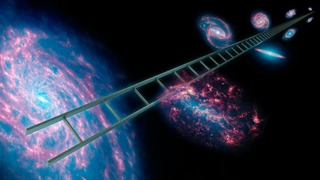
Credit: NASA/JPL-Caltech/W. Freedman (Carnegie)
Chart • October 3rd, 2012 • ssc2012-13a
ssc2012-13a
This graph illustrates the Cepheid period-luminosity relationship, which scientists use to calculate the size, age and expansion rate of the universe. The data shown are from NASA's Spitzer Space Telescope, which has made the most precise measurements yet of the universe's expansion rate by re-calculating the distance to pulsating stars called Cepheids.
Cepheids are essential tools in cosmological-distance calculations thanks to what astronomers call their period-luminosity relationship. The timing, or period, of a Cepheid's pulses correlates with its inherit brightness, or luminosity, as shown on this graph. The longer the pulse rate, the more luminous the star. Once astronomers know how luminous a Cepheid is, they can compare that value to how bright they appear on the sky. The objects will appear dimmer and dimmer the farther away they lie. By using a series of Cepheids and even farther objects of a different type, astronomers can determine the size of our universe.
Spitzer observed 10 Cepheids in the Milky Way (yellow dots) and 80 in one of our nearest satellite galaxies, the Large Magellanic Cloud (circled dots). At the infrared wavelengths used by the cameras operating on Spitzer, the dimming effects of dust on visible light are virtually non-existent. Moreover the scatter in the points about the Period-Luminosity relation is so small that single stars can be used to determine distances many times more precisely than from the ground and in the optical. These two advantages alone have allowed researchers to use the Spitzer observations of Cepheids to securely recalibrate the size, age and expansion rate of the universe.
About the Object
- Name
- Large Magellanic Cloud • LMC • Milky Way
- Type
- Star > Type > Variable > Pulsating
- Star > Type > Variable > Pulsating
Color Mapping
| Band | Wavelength | Telescope |
| Infrared | 3.6 µm | Spitzer IRAC |






